The Zodiac as The Universal Matrix: A Study of the Zodiac and of Planetary Activity (The Lost Writings of Dane Rudhyar)
THE ZODIAC as THE UNIVERSAL MATRIX is not only one of Rudhyar's most accessible and easy-to-read books, it is also the only book in which Rudhyar provides comprehensive descriptions of each of the ten astrological planets in each of the twelve signs of the zodiac; and the descriptions themselves are more striking, psychological and critical than what we came to expect from Rudhyar during the second half of the 20th century. Written during 1942, it uses the birth charts of many world leaders of the time as examples.
The premise of THE UNIVERSAL MATRIX is significant and intriguing, for in it Rudhyar attributes substantive and causal qualities to the zodiac. In the work, Rudhyar describes the zodiac (the Universal Matrix) as a substantive "electromagnetic field" of "zodiacal influence" which is permanently anchored to the earth, the "emanations" of which "beat constantly upon us." Yet such statements, which might surprise some readers familiar with Rudhyar's astrological work, is actually consistent with his lifelong metaphysics. Indeed, the basic concept of fields enveloping the planet and human beings is of ancient origin, and it is an integral part of Theosophy, from which Rudhyar largely drew his metaphysical underpinnings.
Here's some sample descriptions:
MARS IN LEO
"When the Leo-type of energies . . . are activated by the forceful and outgoing planet Mars, fireworks may be expected. This produces a colorful personality, or at least a strong will to dominate . . . There is an intense urge toward dramatic self-expression; and, when concrete materials for self-expression or for personal show are not available, the person is likely to use imaginary materials."
MERCURY IN LIBRA
"In a negative sense, Mercury in Libra reveals a frivolous, butterfly mentality; and also a social urge which is more a matter of intellectual attitudes than one of deep realizations. Mental pride and sensitiveness to social criticism may be in evidence; or an extreme subservience of the mental life to social or cultural traditions."
VENUS IN GEMINI
"When Gemini forces are illumined by the presence of Venus, experiences and sensations are valued mostly for the meaning which can be derived from them . . . Thus the person with such a natal configuration may pass from experience to experience, from human contact to more human contacts simply to provide food for the development of her sense of value and her quality of emotional response. . . . They are like the 'kisses' given to the flowers by the bee; all that the bee wants is honey. . . . It is better not to become attached to persons with a natal Venus in Gemini, if one wants lasting happiness; but an intimate (though brief) contact with them should be revealing and stimulating, for they are artists in expression and 'catalytic agents' for growth."
MARS IN CANCER
"This is a rather unsatisfactory position for Mars, because this planet symbolizes all outgoings and Cancer is a field for the activity of concentrating and indrawing forces. Thus either Mars in Cancer is not allowed to operate with any degree of power by a number of inhibiting influences, or else the energy of Mars is thrust into a work which is not congenial . . . In the former case the person born with Mars in Cancer demonstrates a weak capacity for action and for initiative, great moodiness, irritability or so-called 'artistic' temperament. In the second alternative he tends to act with aggressive selfishness; he makes unreasonable demands upon others . . . loses his sense of proportion and makes a show of himself and his personal problems."
The Zodiac as The Universal Matrix is a book written by Dane Rudhyar, a pioneer in the field of humanistic astrology. In this book, Rudhyar explores the concept of the zodiac as a universal matrix, or a fundamental pattern or structure that underlies the cosmos and all of its parts.
The zodiac is a key part of the system of Western astrology, and it is thought to be a symbolic representation of the path of the sun through the sky over the course of a year. The zodiac is divided into 12 signs, each corresponding to a different period of the year and associated with a particular set of characteristics and qualities.
In The Zodiac as The Universal Matrix, Rudhyar discusses the ways in which the zodiac can be seen as a fundamental pattern that shapes and influences all aspects of life, from the individual to the collective. He explores the symbolism and meaning of each of the 12 zodiac signs and how they relate to the overall structure of the zodiac.
Rudhyar's book is notable for its holistic and inclusive approach to astrology, which seeks to understand the interconnectedness of all things and the ways in which the cosmos reflects and influences human experience. He believed that astrology was not just about predicting the future, but about helping people to understand and work with their own unique energies and potentials.
Overall, The Zodiac as The Universal Matrix is a thought-provoking and illuminating exploration of the zodiac and its role in understanding the human experience. It is a valuable resource for anyone interested in astrology and the ways in which it can be used to help us navigate the challenges and opportunities of life.










